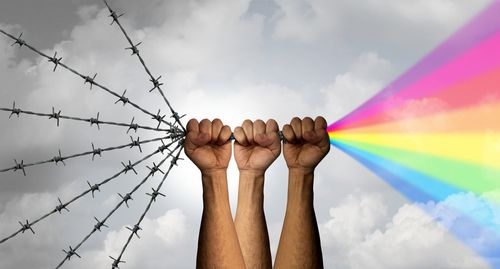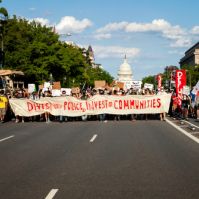 Society has an issue with violence. Any time a violent incident occurs, many people chime in on the action taken to respond to it. Those who side with law enforcement tend to view the response as an example of their oath of honor. Others view their involvement as an act of further aggression that only made the situation worse and call for defunding, reform or abolition.
Society has an issue with violence. Any time a violent incident occurs, many people chime in on the action taken to respond to it. Those who side with law enforcement tend to view the response as an example of their oath of honor. Others view their involvement as an act of further aggression that only made the situation worse and call for defunding, reform or abolition.
The prevailing hope is for justice, but that is not often the outcome of these encounters. Engaging in transformative justice means seeking solutions that do not escalate or perpetuate further violence.
What Is Transformative Justice?
Transformative justice requires community support and the resources to respond effectively to harmful incidents and prevent future violations. A response to oppression, violence or other misdeed is transformative when it exhibits certain values:
- Reduces or eliminates harm
- Fosters healing for all involved
- Ensures accountability
- Produces resilience
- Creates a safe environment where further infractions are unlikely to occur
What Actions and Attitudes Are Transformative?
Those who value transformative justice don't go looking for conflict, but neither do they avoid confrontation. Instead, the same principles used to build trusting relationships and find collaborative solutions are applied. First, it's necessary to establish and communicate clear boundaries. Second, good conflict management skills are vital. It is not enough to call out hurtful actions and leave it at that, which not only tends to result in the perpetrators being labeled as inherently problematic and dismissed but also offers no real healing or closure for their victims. Expecting and actively facilitating growth is a crucial part of transformative justice.
This process can be difficult for those who want quick solutions, but true and lasting justice can be messy and takes time. It doesn't seek to separate society into good and bad people or assume that locking up or otherwise erasing the influence of those who do harm will somehow create peace. To be transformative is to commit to the hard work of recognizing and facilitating the potential of everyone to be a valuable member of society.
How Can Transformative Justice Change Communities?
Transformative justice may start with individual attitudes and choices but must eventually infiltrate wider societal systems in order to bring the peace and reconciliation to which proponents aspire. One of the most restorative but also difficult tenets of this approach is the assumption that no one is unredeemable. Many people of faith are drawn to this idea of justice, but few have adequate experience with putting it into practice. It is much easier to identify and punish or shun the guilty than offer a path to reconciliation. However, the latter is necessary for the transformation of lives and, by extension, society as a whole.
One of the reasons many people hesitate to pursue transformative justice is that it would likely require a major overhaul in how society views harmful behavior. It involves inevitably moving away from a system of detention and punishment and toward a consistent response of support, reparation and rehabilitation. Instead of just asking what the consequences of crimes should be, it entails identifying what community resources are missing, thus making the crimes look like viable solutions in the first place. Transformative justice means reallocating resources to those who are better equipped to prevent harm rather than to those whose function is simply to react to it.
The ultimate goal of transformative justice is to disrupt cycles of violence in communities throughout the nation. At minimum, reform is needed to empower those who have solutions beyond incarceration or separation. When communities have adequate education, social support and other resources that facilitate growth, it is likely that the rates of violence will drop drastically.



